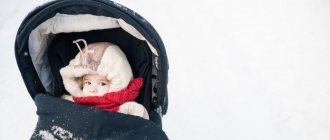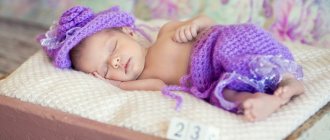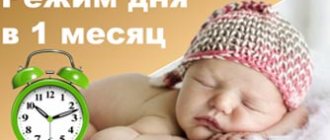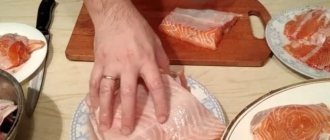What is an air bath for a child
It is best to start hardening a newborn with air baths. This is a simple but effective way to strengthen the immune system. The benefits of this procedure for the skin are difficult to overestimate.
When to start this type of hardening? The earlier the better. It should be borne in mind that this is a gentle procedure that does not pose any risk to the baby if you perform it under suitable conditions.
You do not need any special knowledge for air hardening. The only thing that is needed from parents is a desire to improve the health of their child and knowledge of how often, under what conditions and for what duration to carry out the procedure.
Air baths for infants are a procedure in which the child is naked for some time. When it is cold outside, such hardening should be carried out only indoors, in the summer - also in the fresh air.
What is hardening?
Hardening is an important element of a healthy lifestyle among people of all ages. However, this is especially important for children whose bodies have not yet developed the ability to respond quickly and quickly to sudden environmental changes. Children overheat or experience hypothermia more quickly. Moreover, they are more sensitive to changes in air humidity, especially to its increase, or to UV radiation. Children who have been hardened since childhood get sick less often and adapt more easily to kindergarten. During the week, the child spends most of his time in kindergarten or school. Ways to strengthen children's immunity largely depend on the knowledge of teachers and parents about strengthening their health. Hardening can be defined as a system that is an integral part of the physical education of children. Not only in kindergarten, but also at home, hardening is a powerful remedy that reduces the incidence of colds by 2 to 4 times.
Hardening is the creation of body strength to resist painful influences. It provides protection from diseases and epidemics, ridding the body of pathogenic microbes, helping you to more easily endure troubles, hardships and suffering, since it is synonymous with health. But hardening is not a cure for diseases, but a preventive treatment. A hardened person easily tolerates not only heat and cold, but also sudden changes in ambient temperature, which can lead to a weakening of the body's defenses. Hardening promotes overall strengthening of the body, leads to increased efficiency of the central nervous system, as well as normalization of metabolism and improvement of blood circulation.
What are the benefits of this procedure for the body?
- The body's resistance to infections, especially ARVI, is strengthened.
- The baby develops a thermoregulation mechanism that saves him from overheating and hypothermia.
- This is a powerful prevention of inflammatory skin diseases (diaper dermatitis, diaper rash, etc.).
- The procedure calms the child's nervous system.
- The body is saturated with oxygen.
- Appetite and sleep improve.
Why is this happening? It's easy to explain. When the baby is still growing in the mother's belly, the placenta protects it. Viruses and drafts are not scary for him; the child is constantly at the same temperature. Therefore, after birth, his immune system and thermoregulation mechanism are just beginning to develop.
Exposure to air helps to activate and strengthen them. Just a few minutes without clothes teaches the baby’s body to effectively respond to temperature changes. And if you constantly wrap your child up and protect him from the slightest temperature changes, his defense mechanisms will simply stop working. As a result, the child will be constantly sick.
The benefits of air hardening for the baby’s body
Hardening is not a treatment method, it is a preventive action, but if you adhere to this method of combating various colds, then parents can safely expect that their children will have high endurance and a strong immune system.
The specificity of the method of hardening a baby from a very early age with air procedures leads to the development by the body of a stable protective factor against various types of harmful bacteria and infections.
Air baths for a newborn: how to do it
Air baths for infants should begin approximately 2-3 weeks after birth. To ensure that the procedure is as effective as possible and does not pose any danger, follow these recommendations:
- In the first month of the baby’s life, it will be enough to leave him without clothes for a couple of minutes when changing diapers/diapers. How many times should I repeat air baths for a newborn? Two or three times a day is enough.
- When the baby is one and a half months old, combine hardening with massage and gymnastic exercises. It is advisable to take air baths at a temperature of 19-20 degrees Celsius. Remember that you need to lower the air temperature in the room gradually.
- By six months, it is advisable to increase the duration of the procedure to ten minutes several times a day. Start with three minutes and increase the duration of hardening by one minute every day.
- Make sure that the child does not become hypothermic under any circumstances. If you notice a sign such as goose bumps, immediately dress your baby and reduce the procedure time. If you have problems with sleep, appetite, or acute illnesses, do not harden.
- Carry out the procedure only when the child is healthy and in a good mood. Combine hardening with play so that it evokes positive emotions in the baby.
Remember that the most important thing in this matter is regularity. To achieve the desired effect and truly improve your child’s health, repeat the procedures every day. Reduce the air temperature and increase the hardening duration gradually. Constantly monitor your baby during hardening. Make sure that it does not turn pale or become covered with goosebumps. At the slightest sign of hypothermia, finish the procedure immediately. Air baths after bathing should not be given to newborn children.
Physical education and sports
Air baths are the most favorable and common means of hardening. By helping to remove vapors and gases from the surface of the skin, air baths have a certain hygienic significance for the body. In addition, air baths, due to thermal irritation of the skin, have a physiological effect on the body. This is expressed primarily in the reflex narrowing and expansion of blood vessels with subsequent improvement in the functioning of the extremely delicate and complex mechanism of thermoregulation (heat generation and heat transfer), increased muscle tone and endurance of the cardiovascular system, an increase in the content of hemoglobin and red blood cells in the blood and many other favorable changes in organism.
The main factor affecting humans is air temperature. Everyone knows that the face and hands are least protected from the cold. And although they often get very cold, a person avoids colds and remains healthy.
An air bath can be either general, if the entire surface of the body is exposed to air, or partial (local), if only a separate part of it, for example, the hands, is exposed. The hardening effect in this case is associated primarily with the difference in temperature of the air and the surface of the skin. The air gap between the body and clothing usually has a constant temperature of about 27-28 ° C. The difference between the temperature of a clothed person's skin and the surrounding air is usually small, and therefore heat transfer is almost imperceptible. As soon as a person is freed from clothes, the process of heat transfer becomes more intense. The lower the external temperature, the more cooling we are exposed to.
Depending on the air temperature, air baths are divided into very cold (below 0°C), cold (0–8°C), moderately cold (9–16°C), cool (17–20°C), indifferent, or indifferent (21–22°С), and lukewarm (over 22°С). This division, of course, is arbitrary: in well-hardened people, the feeling of cold occurs at a lower temperature (Antropova M.V., 1982).
to start taking air baths in a pre-ventilated room. Then, as they harden, transfer them to the open air. The best place for an air bath is shaded areas with green spaces, away from sources of possible air pollution with dust and harmful gases. Take baths lying down, reclining or moving. You should undress quickly, so that the air bath immediately affects the entire surface of the naked body and causes a quick and energetic reaction of the body.
The time of day for air hardening is not of fundamental importance, but it is better to perform the procedures in the morning, after sleep, in combination with morning exercises. It is recommended to take air baths on an empty stomach or at least 1.5 hours after meals.
When hardening with air, in addition to its temperature, it is necessary to take into account humidity and speed of movement. Relative humidity is the ratio of absolute humidity to the highest humidity at a given air temperature; it is expressed as a percentage. Air, depending on its saturation with water vapor, is usually divided into dry (up to 55%), moderately dry (from 56 to 70%), moderately humid (from 71 to 85%) and very humid (over 86%). It has been established that at high relative air humidity a person is colder than at low relative humidity (Antropova M.V., 1982).
Equally important is the speed of air movement. So, in cold, but calm, windless weather, a person is warmer than in warmer, but windy weather. The fact is that the layer of heated air near our body (the so-called boundary layer) is constantly changing, and the body heats more and more portions of air. Consequently, when there is wind, the body expends more heat than in calm weather. Wind causes an increase in heat transfer from the body. At high temperatures (up to 37 ° C) it protects a person from overheating, at low temperatures - from hypothermia. The combination of wind with low temperature and high air humidity is especially unpleasant.
Aerosols also have an effect on the body. They constantly “bombard” the skin of the body and the mucous membranes of the respiratory tract. The composition of aerosols is varied: for example, in air flows coming from the sea, sodium, iodide, bromide and magnesium salts predominate. The wind from large green areas carries tree and flower pollen and microorganisms. It should also be taken into account that the content of aerosols in the air is uneven.
Exercise is essential during cool and cold baths. If the weather is damp and windy, the duration of the air bath is reduced. In case of rain, fog and air speed above 3 m/s, it is better to move the procedures indoors.
In winter, air baths are carried out indoors and combined with gymnastics and subsequent water procedures. For the youngest children (up to one year), they are combined with the process of swaddling and changing clothes. At this time (from 2-4 to 10-12 minutes), room air, the temperature of which should not be lower than 20 and higher than 22 ° C, unhinderedly affects the skin receptors.
Air hardening can be started at any age. From the end of the child’s second month of life, massage and gymnastics are performed during one of the swaddlings. For children aged one year and older, the room temperature during an air bath is gradually reduced to 18°C. An air bath is combined with morning exercises (5-7 minutes), the child does it in a T-shirt, shorts and slippers. Children 4-7 years old remain in shorts and slippers for 10-15 minutes, of which 6-7 minutes do gymnastics (Antropova M.V., 1982).
In summer, air baths are carried out outdoors, mainly in the morning, in places protected from direct sunlight and strong winds. Children must remain half-naked for a certain period of time. The body is exposed as directed by the doctor in a certain order: first the upper and lower limbs, and then the torso. Hardening of children with air baths begins in the summer in calm weather at an air temperature of at least 20°C. During air baths, it is recommended to play games or do some active activities. The duration of the first baths should not be more than 15 minutes, then it is gradually increased.
Hardening children begins at an air temperature of at least 16-18°C, initially for 5-10 minutes, and then gradually increases the duration of the procedure to 25 minutes. They also gradually move on to hardening at a lower temperature, but not lower than 12°C, while reducing the duration of the session to 10 minutes and combining it with physical exercise. In spring and summer, it is recommended that half-naked children stay in the shade in the fresh air for up to 3-5 hours a day, depending on the weather (Antropova M.V., 1982).
When carrying out air baths, the health status of children and adolescents and their individual reaction are taken into account. Children, especially weakened ones, should not be allowed to become cold, trembling, goosebumps, or cyanosis should occur.
The first air baths for healthy people aged 18 years and older should last 20-30 minutes at an air temperature of 15-20°C. Subsequently, the duration of the procedures increases daily by 5-10 minutes and is thus brought to 2 hours. The next stage is air baths at a temperature of 15-10 ° C for 15-20 minutes. At this time, it is imperative to perform vigorous movements. Only well-seasoned people can take cold baths and only after a medical examination. The duration of such baths should not exceed 5-10 minutes. Cold baths should be completed by rubbing the body and a warm shower (Antropova M.V., 1982).
When hardening with air, you should not bring yourself to the point of chills. At the first signs of severe cooling, you need to jog and do some gymnastic exercises.
Pros and cons of air baths
If you follow all the above recommendations correctly, then hardening will bring only advantages to your child. The procedure will not have any disadvantages if you do not abuse it and sharply lower the air temperature.
To make the effect even more positive, combine regular air hardening with other preventive procedures. Firstly, ventilate the room more often. The best way is through the through method, when all windows and doors are open. Of course, the child should not be in the room at this time. When it is filled with fresh air, return the baby back.
It is desirable that as a result of ventilation the air temperature drops by a couple of degrees. There is no need to dress your child warmer after this. In the cold season, repeat ventilation 4-5 times a day for 5-10 minutes. In summer, leave windows open at all times.
Take your child for walks in the fresh air more often. At a temperature of at least 10 degrees below zero, babies 2-3 weeks old can already be outside. But remember that the first walk should last no more than 10-15 minutes. Gradually increase the walking time to one and a half to two hours.
Never dress your child warmer than necessary. He shouldn't sweat, but he shouldn't get too cold either. If a child is comfortable in his clothes, he sleeps well, breathes smoothly, his hands are warm, and his complexion is rosy.
If a child is suddenly hypothermic, his nose and hands become cold, his lips turn blue.
Cosmetics for newborns La-Cri
Air baths are undoubtedly one of the best preventive remedies against skin diseases and, in particular, diaper dermatitis. But cosmetics also play an important role in skin care. Many cosmetics, even those intended for children, can cause allergies and irritation. Therefore, pediatricians advise giving preference to neutral, hypoallergenic products.
The La Cree skin care series is designed specifically for babies from the first days of life. It includes a medicated diaper cream, which is applied to the skin after an air bath. The cream nourishes and moisturizes the skin, protecting it from irritation.
The product prevents the formation of diaper rash, so it is advisable to use it before walks, since diaper rash can appear on the vulnerable skin of a baby even within a couple of hours in a wet diaper.
All these preventive methods, combined with natural cosmetics, will help you raise a healthy and cheerful baby.
Clinical researches
The effectiveness, safety and tolerability of La-Cri products have been clinically proven. The products are recommended by the Union of Pediatricians of Russia. During clinical studies, specialists were able to record excellent results.
It has been proven that La-Cri diaper cream:
- creates a protective barrier on the skin;
- relieves redness and irritation;
- provides gentle skin care.
Sources:
- Anderson, Arici, Azzopardi, Visual neonatology. Guide, GEOTAR-Media, 2021.
- Fundamentals of health development in children. Textbook. — Moscow: Mir, 2016.
- Tulchinskaya, V.D. Nursing assistance to children / V.D. Tulchinskaya. — Moscow: Russian State University for the Humanities, 2021.









